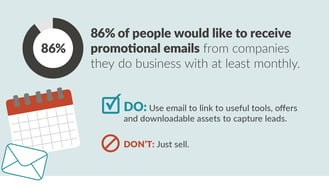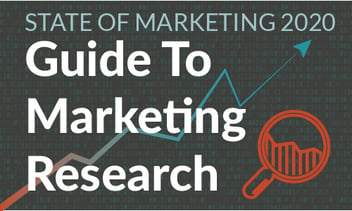The ABCs of Integrated Marketing In Honor Of Dr. Seuss (Part 1)
.jpg?width=550&name=March%202%20Blog%20Header-01%20(1).jpg)
I will work from my home.
I will write from Nice or Nome.
Creating content, telling tales.
Attracting traffic, driving sales.
Marketing is what I do.
Now let me share some tips with you.
Well, it might not quite match the wit and brevity of Dr. Seuss, but in honor of Theodor Geissl’s birthday and Read Across America Day (March 2—the literary legend was born 117 years ago), I am taking it back to basics with an alphabet’s worth of definitions and insights into integrated marketing.
A is for Audits
I’m not talking about financial investigations. I’m talking media, messaging and marketing audits that take a close look at your brand’s positioning and exposure in the media, your marketing program’s performance, and your inventory of marketing materials, looking for strengths, weaknesses, opportunities and threats. You need to know where you currently stand in order to set future goals and plans to achieve them. (More reading: 5 Secrets for Using Audits to Uncover Marketing Mistakes.)
B is for Bylined Articles
.jpg?width=327&name=JONES-ABCs-marketing-bylined-articles%20(1).jpg)
C is for Campaign Planning
When you create full-funnel integrated campaigns, you ensure that you are reaching the right audiences, through multiple channels, with consistent and relevant messaging for each step along the buyers’ journey. Think about including in your campaign related content for each stage of the sales funnel with messages that build on each other. (More reading and a free template: Plan A Year’s Worth Of Marketing Campaigns.)
D is for Data
In some professions, you have to do the dirty work to get the best results. In marketing, you have to do the “data work”—at the beginning, in the middle and at the end. Doing the data work means crunching the numbers to determine the goals needed to achieve corporate sales and revenue objectives. It means doing original research to create compelling content that is valuable to your customers and prospects. And it means measuring your success in multiple ways to evaluate performance and make adjustments moving forward. (More reading: Lessons From 15 Years: First, You Have To Do The Data Work.)
E is for Email Marketing
With 80 percent of marketers seeing increases recently in their email engagement, this channel is an essential element of your integrated marketing strategy. Email is crucial to inbound marketing as the link for lead nurturing, but also provides valuable feedback to inform the rest of your marketing content and tactics as you monitor key metrics such as open and click-through rates. (More reading: Your Email Marketing Strategy Guide.)
F is for Facebook (and Other Social Media Channels)
Facebook is the most widely used social media platform, but others are also important in reaching key audiences. LinkedIn performs better than all others for B2B marketers, while Instagram reaches a younger market and Pinterest has advantages for retailers and other visually-oriented brands. The important thing to remember about social media is that it should work on concert with the rest of your marketing, not be treated a separate strategy operating in isolation. (More reading: Your Complete Social Media Guide: What, Where, When and How Often To Post.)
G is for Google and SEO
.jpg?width=329&name=JONES-ABC-marketing-Google-SEO%20(1).jpg)
As Jones co-founder and managing principal Scott Muff noted in his analysis of survey responses from HubSpot’s annual marketing survey, it almost seems too low to think that only 2/3 of marketers actively invest in SEO. But, as he said then, maybe they just don’t realize that there is more to SEO than proper placement of keywords in headlines and meta data (though those count, too—download our popular template for planning your on-page SEO). Google goes well beyond keyword placement when determining search engine rankings, from considering the depth and authority of the content, to measuring page load speeds and keying off reader signals like time-on-page and bounce rate. (More reading: Your Guide To SEO Strategy.)
H is for HubSpot
Inbound marketing relies on intuitive content management, efficient automation of lead nurturing workflows, and integration of marketing information with sales and CRM solutions. And we found all of that, plus a fantastic level of education and support, with our partners at HubSpot. From managing blog posts and downloadable assets to creating automated email series and generating useful reports on our performance, HubSpot has been a valuable partner for us and our clients. JONES is a certified HubSpot partner agency, so we are ready to put the same tools to work for you. (Read more: Convince the C-Suite You Need Help With HubSpot and 4 Secrets of the Perfect HubSpot Partner Agency.)
I is for Integrated
Integrating public relations and marketing is essential in order to maximize the impact of cohesive branding and messaging along with the efficiencies of shared content, all with the goal of achieving corporate lead, sales and revenue objectives. Integrating your communication efforts will require abandoning the idea that the two disciplines are inherently different and breaking down barriers that may have created silos in which each team acted independently, whether as in-house teams, outside agencies focused solely on one aspect or the other, or a combination. (Watch the video: How To Plan Complete Integrated Marketing & PR Campaigns)
J is for JONES
That’s us! JONES is a full-service marketing and PR agency that has won numerous awards and maintained a roster of amazing technology clients in the healthcare, financial services, SaaS, telecom, public safety, education and life sciences industries. Working with an agency is one way of accessing the skills and resources needed to meet your company’s marketing, sales and revenue goals. If you’d like to chat about your needs and how we can address them, schedule a time in my calendar. (Read more: How Could An Agency Partner Help You, 5 Benefits Of Working With An Inbound Marketing Agency, and How To Get The Best Results From Your Content Marketing Agency.)
K is for Know What Your Marketing Is Worth
Three in ten marketers say that providing the ROI of their marketing is one of their greatest challenges. But it is also incredibly important, especially in times when businesses are streamlining and cutting budgets—if you can’t prove that your efforts actually move the needle on concrete corporate objectives (aka profit), getting the budget you need will be an uphill battle. It is essential that you track the right metrics and calculate what your marketing is truly worth. (Read more: 5 Steps To Marketing Measurement and download this workbook: 6 Marketing Metrics Your Boss Actually Cares About.)
L is for Lead Generation
One of the key objectives in creating marketing content is to generate leads. Inbound marketing focuses on generating leads by attracting website traffic and converting those visitors into leads through gated offers, which can range from free trials to exclusive reports, webinars, ebooks or email newsletters and blog subscriptions. (Read more: Lead Generation Tops Digital Marketing Objectives.)
M is for Metrics
Analyzing performance and results is essential to understand how to improve your marketing strategies going forward. Under K I pointed you to the kinds of metrics that the executive suite is interested in, but as a marketing manager or CMO, you’ll also want to take time (or assign a team member to do so) digging into the nitty-gritty of a wide range of metrics for your email, landing pages, blog posts and more. (Read more: Dig Into Your HubSpot Data For A Marketing Success Audit.)
Well, that takes us halfway through the alphabet, with a lot of information you can dig into further for more tips, instructions and insights. But don’t worry, just like the Cat in the Hat, I’ll come back.
There are 13 more letters to go,
Like S, P, Q, of course, O.
You’ll not want to miss
The rest of my list.
So click to sign up here, you know.
What I mean is, you can subscribe to get a weekly email with our latest blog posts, including the second half of this ABCs of marketing.
-1.png?width=1652&height=294&name=Jones(RGB)-1.png)

.jpg)











